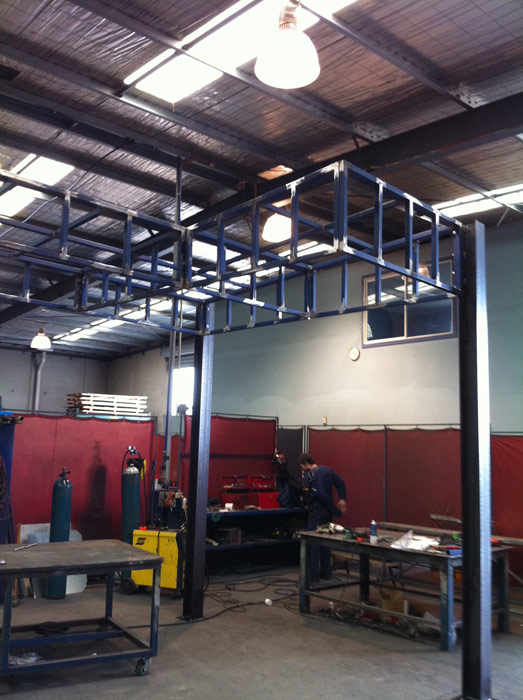Mild Steel Fabrication: Comparing Mild Steel to Other Metals for Fabrication
Blog | November 3rd, 2023
Unlock the potential of mild steel fabrication and compare it with other metals. Get started with precision and expertise from McKean’s. Call (03) 9796 3742.
Mild steel is one of the most popular choices of metal for fabrication across a wide variety of industries and applications. However, other metals may be better suited depending on the specific needs and requirements of the application. In this article, we’ll compare mild steel to aluminium, stainless steel, and high-carbon steel to highlight the unique properties and fabrication qualities of each.
Mild Steel
Mild steel has a combination of strength, weldability and cost-effectiveness that makes it an excellent general-purpose metal for fabrication. It is an alloy of iron and carbon, with up to 0.3% carbon content. Mild steel is strong, ductile and relatively easy to cut and weld. It can be formed into a variety of shapes. Mild steel can rust, so it requires painting or other anti-corrosion surface treatments for many uses. Overall, mild steel provides the best balance of fabrication qualities at a reasonable price for a wide range of applications from machinery to building construction.
Aluminium
Aluminium has a lower strength than steel but offers the advantages of being highly corrosion-resistant, and much lighter in weight. These properties make aluminium well-suited to transportation applications like automotive parts, and aircraft components, as well as decorative and architectural fabrications. Aluminium can be extruded into complex cross-sectional shapes. It is easy to weld, however special techniques must be used to avoid weakening the welds. Aluminium fabricated components require less heavy lifting equipment due to their light weight. However, the raw material costs for aluminium are higher than for mild steel.
Stainless Steel
Stainless steel contains chromium to improve strength and corrosion resistance. It offers high durability in harsh environments like marine applications, chemical/petrochemical processing equipment, food production, medical devices and architectural trim and accents. Stainless steel maintains its smooth shiny surface appearance over time with minimal maintenance. However, working with stainless steel poses some fabrication challenges. Cutting and welding stainless steel requires slower processes and specialised tools to control work hardening and distortion. The material costs of stainless steel are also significantly higher than mild steel.
High Carbon Steel
High-carbon steel has a greater carbon content (0.3-1.5%) than mild steel. The higher carbon levels dramatically increase the strength, but reduce the ductility and weldability. High-carbon steel is commonly used when fabricating high-strength structural components like beams, axles, and press frames. It can be heat treated with processes like quenching and tempering to further tune its hardness and toughness for tools, springs, wire rope, and cutting blades. However, high-carbon steel is substantially more difficult to cut, bend, and weld versus mild steel. Greater control and special techniques are required to avoid cracks and distortion.
Mild steel is the most balanced choice for general fabrication work combining good strength, ductility, weldability and cost. But for projects with specialised requirements and performance needs, the properties of aluminium, stainless steel, or high-carbon steel may justify their added costs and fabrication challenges. Carefully considering the application requirements and qualities of each metal will lead you to select the optimal material for your next fabrication project.
With extensive expertise fabricating with mild steel, McKean’s Sheetmetal has the skilled team and equipment to take on any custom mild steel fabrication project. For high-quality mild steel fabrication services, choose McKean’s Sheetmetal.
Optimized by NetwizardSEO.com.au
